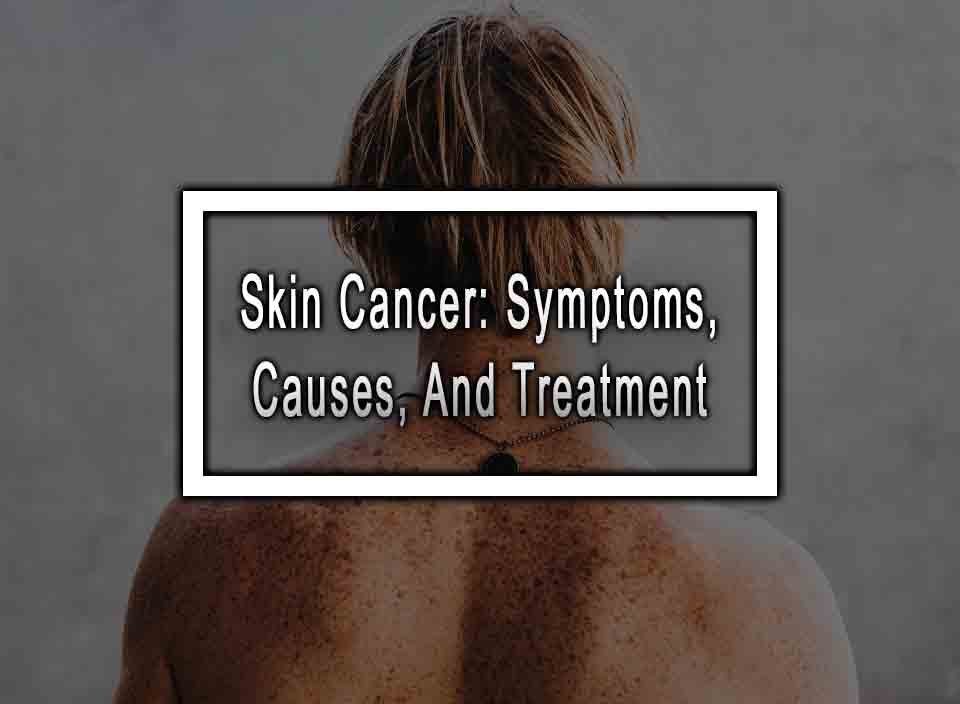Skin cancer is one of the most common types of cancer. This type of cancer develops when abnormal growth of skin cells occurs due to excessive exposure to ultraviolet (UV) rays. Skin cancer can be of several types with different symptoms, causes, and treatment options. It is important to understand the symptoms of skin cancer to detect it early and seek timely treatment. In this article, we will discuss the symptoms, causes, and treatment of skin cancer.
Table of Contents
ToggleSymptoms of skin cancer
Skin cancer can often be detected by noticing changes in the skin. Some of the common symptoms of skin cancer include:
- A mole that changes color, size, or shape
- A new mole appears out of nowhere
- A sore that does not heal
- A patch of skin that itches, hurts, or bleeds
- A spot on the skin that looks shiny, waxy, or scaly
- A lump or bump on the skin that grows bigger over time.
If you notice any of these symptoms, it is important to consult a doctor immediately for an accurate diagnosis and treatment.
Causes of skin cancer
The main cause of skin cancer is exposure to UV radiation, which can come from the sun or artificial sources like tanning beds. UV radiation damages the DNA in skin cells, leading to mutations that cause cancer. Other risk factors for skin cancer include:
- Fair skin, blue or green eyes, and red or blonde hair
- Having a history of sunburns or excessive sun exposure
- Living in regions with high levels of UV radiation, such as near the equator or high-altitude areas
- Having a weakened immune system due to medical conditions or medications.
Prevention is the best way to reduce the risk of skin cancer. Protect your skin from UV rays by wearing protective clothing, using sunscreen, seeking shade during peak hours of sunlight, and avoiding tanning beds.
Treatment of skin cancer
The treatment of skin cancer depends on the type, size, location, and stage of cancer. Some of the common treatment options for skin cancer include:
- Surgery – In this procedure, the dermatologist will remove the cancerous cells from your skin with a scalpel or other surgical tools. The surgeon will also remove a small amount of healthy tissue around the cancerous area to ensure all cancer cells are removed.
- Radiation therapy – This treatment uses high-energy radiation to destroy cancer cells. Radiation therapy is used to treat skin cancers that have spread to other parts of the body or cannot be removed by surgery.
- Chemotherapy – This treatment uses drugs to destroy cancer cells. Chemotherapy is often used for skin cancers that have spread to other parts of the body.
- Photodynamic therapy – In this treatment, a solution containing a special light-sensitive drug is applied to the skin. The drug is then activated by a special light that destroys cancer cells.
Conclusion
Skin cancer is a serious health condition that can affect anyone. It is important to understand the symptoms, causes, and treatment options for skin cancer to detect it early and receive appropriate treatment. If you notice any changes in your skin, such as new growths, moles, or spots, consult a dermatologist immediately for an accurate diagnosis and treatment. Remember that prevention is the best way to reduce your risk of skin cancer. Protect your skin from UV radiation and avoid excessive sun exposure to keep your skin healthy and cancer-free.
Skin Cancer FAQ
Here are the most common questions about skin cancer.
What are the different types of skin cancer?
There are three main types of skin cancer: basal cell carcinoma, squamous cell carcinoma, and melanoma.
Who is at risk for skin cancer?
People with fair skin, a history of sunburns, a family history of skin cancer, or who spend a lot of time outdoors are at a higher risk for skin cancer.
How can I prevent skin cancer?
You can prevent skin cancer by wearing protective clothing and a hat, staying in the shade, avoiding sun exposure during peak hours, and using sunscreen with an SPF of at least 30.
How is skin cancer diagnosed?
Skin cancer is diagnosed through a skin biopsy, which involves removing a small piece of skin for examination under a microscope.
Is skin cancer curable?
Skin cancer is often curable when detected early and treated promptly. However, certain types of skin cancer, such as melanoma, can be more aggressive and difficult to treat. Regular skin screenings can help with early detection.
Can I still go out in the sun if I’ve had skin cancer before?
It is still important to protect your skin from the sun if you have had skin cancer before. Make sure to wear protective clothing and sunscreen regularly and avoid sun exposure during peak hours.
More like this: Tramadol Side Effects











